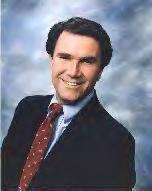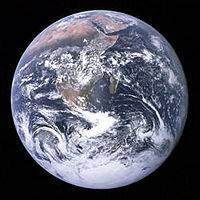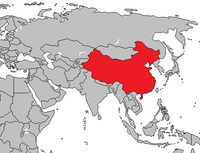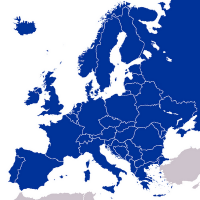Atheism vs. religion

As far as the atheism vs. religion ideological conflict, from an evidential standpoint and benefits to societies and individuals standpoint, religion/theism has prevailed and atheism has been to shown to be invalid and have many negative consequences.
See:
Contents
Global resurgence of religion

See also: Growth of religion and Desecularization
Eric Kaufmann is a professor of politics at Birkbeck, University of London and author. His academic research specialty is how demographic changes affect religion/irreligion and politics.
On December 23, 2012, Kaufmann, who is an agnostic, wrote:
| “ | I argue that 97% of the world's population growth is taking place in the developing world, where 95% of people are religious.
On the other hand, the secular West and East Asia has very low fertility and a rapidly aging population... In the coming decades, the developed world's demand for workers to pay its pensions and work in its service sector will soar alongside the booming supply of young people in the third world. Ergo, we can expect significant immigration to the secular West which will import religious revival on the back of ethnic change. In addition, those with religious beliefs tend to have higher birth rates than the secular population, with fundamentalists having far larger families. The epicentre of these trends will be in immigration gateway cities like New York (a third white), Amsterdam (half Dutch), Los Angeles (28% white), and London, 45% white British. [4] |
” |
Michael Blume, a researcher at the University of Jena in Germany, wrote "Most societies or communities that have espoused atheistic beliefs have not survived more than a century."[5] Blume also indicated concerning concerning his research on this matter: "What I found was the complete lack of a single case of a secular population, community or movement that would just manage to retain replacement level."[5] See also: Atheism and sexuality
In 2008, Dr. Antulio J. Echevarria, in his monograph entitled Wars of Ideas and the War of Ideas, "offers a brief examination of four common types of wars of ideas..."[6] While he believes that a sound understanding the wars of ideas can inform strategy, Echevarria "concludes that physical events, whether designed or incidental, are in some respects more important to the course and outcome of a war of ideas than the ideas themselves."[6] [7] Kaufmann argues that fertility rate differences over time will have a stronger effect on the atheism/agnosticism vs. Christianity ideological struggle than evangelism will in West and that immigration of religious immigrants will also have a strong effect.[8]
Growth of global deseculization
See: Growth of global desecularization
Atheism vs. Abrahamic religions
Growth of religious in secular areas of the world
See also: Atheist population
The current atheist population mostly resides in East Asia (particularly China) and in secular Europe/Australia primarily among whites.[9] See: Western atheism and race
Europe
See also: Secular Europe
Europe is presently experiencing desecularization forces through: religious immigrants who have higher fertility rates than moderately religious and the sub-replacement level of fertility of the irreligious in many European countries. This trend is expected to continue and the secular population is projected to plateau by 2050, or as early as 2021 (see also: Growth of global desecularization).[11]
Eric Kaufmann indicates, "Committed religious populations are growing in the West, and will reverse the march of secularism before 2050."[12] Kaufmann also declared "Religious fundamentalism is going to be on the increase in the future and not just out there in the developing world..., but in the developed world as well."[13]
Multiculturism, assimilation and the desecularization of Europe
See also: Desecularization of Europe
Kaufmann in an academic paper entitled Shall the Righteous Inherit the Earth? Demography and Politics in the Twenty-First Century wrote:
| “ | Ethnicity and race may succumb to liberal modernity, but committed religious populations cannot be assimilated to liberal secularism fast enough to compensate for their demographic advantage in a world of plunging fertility and growing migration. In the end, it is a battle between religious fertility on the one hand, and, on the other, religious decline through the 'assimilation' of religious offspring into secularism. This paper argues that the weakness of secularism and a widening secular-religious fertility gap points toward a religious victory...
The principle of tolerating and 'celebrating' diversity is a corollary of postmodern relativism which opens up space for antimodern religious 'diversities' to take root. If they are demographically-powerful religious movements like Islamism or evangelical Christianity, they will exploit this weakness to progressively erode the hegemony of western secular humanism.... In the Europe of tomorrow, immigration and religious fertility will increase the proportion of committed Muslims and Christians, many from the developing world. It may seem fanciful to imagine a moral conservatism uniting white and nonwhite Christians as well as Muslims against 'secular humanists'. However, a version of this process has occurred in the United States, and it can be argued that the cocktail of cultural relativism, secular exhaustion and demographic change is even more potent in Europe than America. The division between native ethnic groups and immigrant groups is currently more important in Europe, but as the Muslim and religious Christian minorities grow, they will become as important for conservative politicians as the religious Hispanics of America whom the Republicans have so assiduously courted. At some point, it will make more electoral sense for European conservatives to appeal to a trans-ethnic coalition of moral conservatives than it will to stress anti-immigrant themes and ethno-nationalism. The liberal-left will find it extremely difficult to craft a defense of secularism given its investment in cultural relativism, the exhaustion of its secular religions, and its laissez-faire attitude to demographic change. Standing back from the fray, we can think of demography as the achilles heel of liberalism.[14] |
” |
For more information, please see: Desecularization of Europe
Rapid growth of Christianity in China
See: Growth of Christianity in China

According to Slate, "Protestant Christianity has been the fastest growing religion in China."[16] Evangelical Christianity is especially growing sharply in China.[17]
On November 1, 2014, an article in The Economist entitled Cracks in the atheist edifice declared:
| “ | Officials are untroubled by the clash between the city’s famously freewheeling capitalism and the Communist Party’s ideology, yet still see religion and its symbols as affronts to the party’s atheism...
Yang Fenggang of Purdue University, in Indiana, says the Christian church in China has grown by an average of 10% a year since 1980. He reckons that on current trends there will be 250m Christians by around 2030, making China’s Christian population the largest in the world. Mr. Yang says this speed of growth is similar to that seen in fourth-century Rome just before the conversion of Constantine, which paved the way for Christianity to become the religion of his empire.[18] |
” |
See also
Notes
- ↑ Bahsen at the Stein debate by John Frame
- ↑ The Great Debate: Greg Bahnsen vs Gordon Stein
- ↑ Global Study: Atheists in Decline, Only 1.8% of World Population by 2020
- ↑ 97% of the world's population growth is taking place in the developing world, where 95% of people are religious, Tuesday, April 30, 2013
- ↑ 5.0 5.1 Atheist: A dying breed as nature favours faithful
- ↑ 6.0 6.1 Abstract of Wars of Ideas and the War of Ideas. International Relations and Security Network.
- ↑ Antulio Joseph Echevarria. "Wars of Ideas and the War of Ideas" (PDF), Strategic Studies Institute of the US Army War College (SSI), June 2008, pp. 63.
- ↑
- Eric Kaufmann - Religion, Demography and Politics in the 21st Century
- [Shall the Religious Inherit the Earth?], Video - Lecture by Eric Kaufmann
- Fora-TV - Australia Lecture - Eric Kaufmann- Shall the religious inherit the earth
- ↑ A surprising map of where the world’s atheists live, By Max Fisher and Caitlin Dewey, Washington Post, May 23, 2013
- ↑ 10 projections for the global population in 2050 By Rakesh Kochhar, Pew Research Forum, February 3, 2014
- ↑ Shall the Religious Inherit the Earth?: Demography and Politics in the Twenty-First Century by Eric Kaufmann
- ↑ Early paper - Shall the Religious Inherit the Earth?: Demography and Politics in the Twenty-First Century by Eric Kaufmann, Belfer Center, Harvard University/Birkbeck College, University of London
- ↑ Eric Kaufmann - Religion, Demography and Politics in the 21st Century
- ↑ Shall the Righteous Inherit the Earth? Demography and Politics in the Twenty-First Century by Eric Kaufmann
- ↑ "The largest atheist/agnostic populations". Chris & Terri Chapman. Countries with the largest atheist populations.
- ↑ When Will China Become the World’s Largest Christian Country?, Slate
- ↑ In China, a church-state showdown of biblical proportions
- ↑ Cracks in the atheist edifice, The Economist, November 1, 2014
